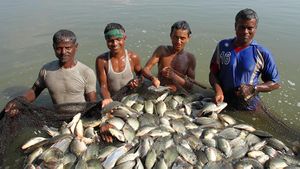Knowledge fuels change - Support energypedia!
For over 10 years, energypedia has been connecting energy experts around the world — helping them share knowledge, learn from each other, and accelerate the global energy transition.
Today, we ask for your support to keep this platform free and accessible to all.
Even a small contribution makes a big difference! If just 10–20% of our 60,000+ monthly visitors donated the equivalent of a cup of coffee — €5 — Energypedia would be fully funded for a whole year.
Is the knowledge you’ve gained through Energypedia this year worth €5 or more?
Your donation keeps the platform running, helps us create new knowledge products, and contributes directly to achieving SDG 7.
Thank you for your support, your donation, big or small, truly matters!
Field Evaluation of a Passive Aeration System for Aquaculture
Overview
|
Innovator |
||
|
Project |
Field Evaluation of a Passive Aeration System for Aquaculture | |
|
Collaborators |
BRAC Enterprises (Bangladesh) Curiositate | |
|
Location Applied |
Aquaculture is a large industry in many low income countries (LICs); fish farms account for about 5 percent of the GDP of Bangladesh. Improving the quality of aquaculture pond water has the potential to increase fish yields, raise incomes, and improve food security. In large aquaculture facilities, aeration has been shown to improve water quality and increase yields. However, aeration equipment is costly and requires electrical power inputs which can limit its use in LICs. Dissolved oxygen (DO) that is used by the fish is provided by photosynthesis, which is related to sunlight and takes place during daylight hours. The oxygen is produced at the pond surface and much oxygen is lost to the atmosphere. By circulating the water, more oxygen can be introduced.[1]
Clean Energy Solution
The proposed solution is a new aeration method that does not require electricity, has few maintenance requirements with no moving parts, and is inexpensive to fabricate and deploy in LICs. The system uses heat that is captured through a solar thermal absorber plate and transferred to the bottom of the pond to heat the bottom water. The heated water will rise and mix the pond, spreading oxygen-rich water from the top through the entire depth of the pond. This increases the DO reservoir and can result in improved water quality and higher pond yields.[1]
Impact
The system will allow for increased density of fish stock,
yields of fish, as well as larger fish that have a higher market value and demand. Fish feed is also used more efficiently, which reduces feed and operation costs. The solution is an alternative to power-hungry aeration systems that consume a significant amount of energy and capital. For farmers not using aeration, the technology will provide all of the benefits described above. For farmers using aeration, replacing or supplementing existing devices can greatly decrease energy consumption for aquaculture.[1]
Organization
The University of Toronto will oversee a small team conducting research focused on design, and analysis of the new aquaculture aeration technology. The University of Toronto has partnered with Curiositate to provide industry feedback and consultation throughout the development of the technology. A partnership has also been formed with BRAC for field trials and planning for technology scale-up.[1]
Progress Update
Using the Powering Agriculture funding, the device design has been further optimized to use the solar thermal energy more efficiently in the aeration process. The University of Toronto has built and installed two trial solar aeration devices at a fish farm in Bangladesh. These initial devices were installed at two trial ponds at a hatchery operated by BRAC to evaluate the technology. An intake survey has also been conducted with 120 fish farmers to gauge their interest in the device and select the participants for the randomized control trial which will evaluate the efficacy of the device.[1]
Further Information
- Bangladesh Energy Situation
- Website Powering Agriculture Homepage, Winners/ Innovators
- Powering Agriculture: An Energy Grand Challenge for Development
- Powering Agriculture Newsletters
- Website University of Toronto
- Website BRAC





















